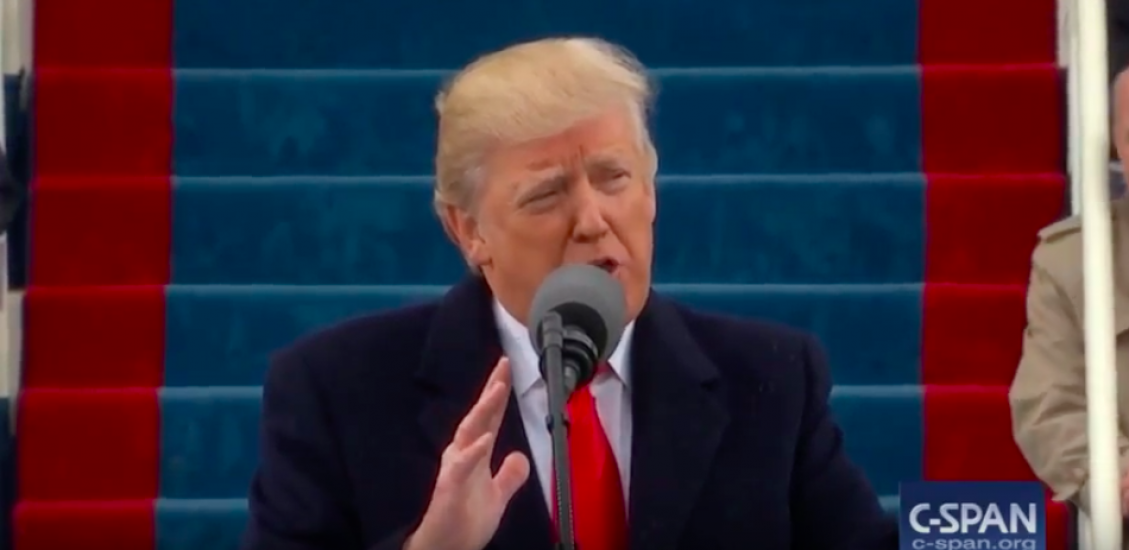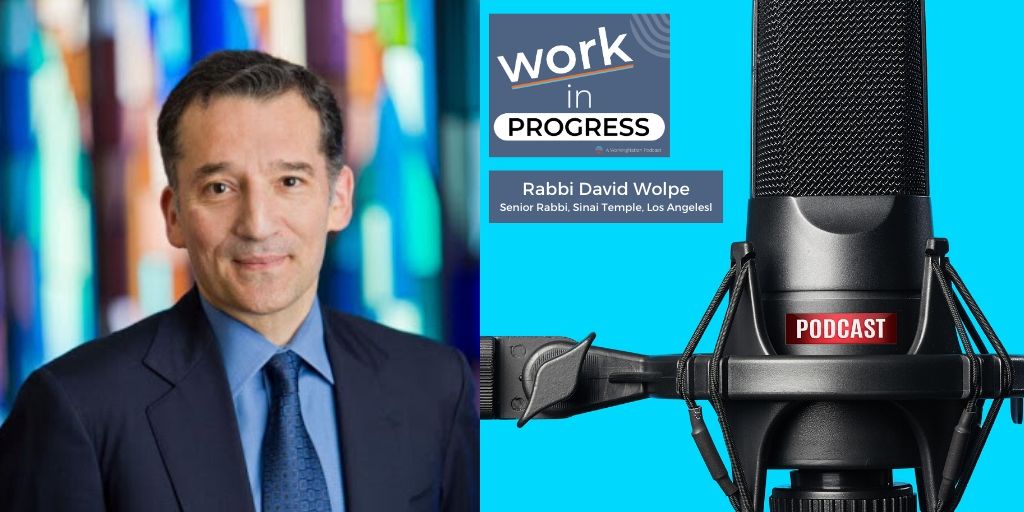“I will be the greatest jobs producer that God ever created.” – Donald J. Trump
With those words during his first and only post-election news conference, President-elect Donald Trump set the jobs bar to heavenly heights. And everyone is wondering, what will it take to clear it?
As the Obama administration comes to a close, the jobless rate sits at a relatively low 4.7 percent, a number economists sometimes categorize as “full employment.” However, by almost every account, the election of 2016 will go down as the election about the forgotten middle class workers. So as Mr. Trump sits down in the Oval Office, he will need to get serious about jobs.
The promise to bring back jobs to working class Americans was a cornerstone of the Trump campaign. Arguably, it won him the job as middle class white men voted in unprecedented numbers with the expectation that he will save or restore their jobs. During the campaign he promised that under his plan, over the next 10 years, the economy will average 3.5 percent growth and create a total of 25 million new jobs.
And as we move into the beginning of his presidency, he claims to have influenced companies like Walmart, Carrier, Ford and General Motors to keep plants open and expand domestic production previously planned for Mexico. In all, various companies have announced a total of more than 200,000 “new” jobs since the election. But there’s more to it. For many companies, new promises to add jobs are nothing more than repackaged versions of plans that already were in place before the election. Executives and analysts say they would have happened regardless of who ended up in the White House.
No matter how you look at it, a job is a job. This has been a welcome development for the workforce. But can he keep it up?
To explain how he will make all this happen, last September Mr. Trump released a “Contract With The American Voter,” a 100-day action plan to “Make America Great Again,” along with a supplement of parallel efforts to work with Congress to introduce broader legislative measures and fight for their passage. We thought it would be a good time to re-examine these proposals and look ahead to see what it all might mean.
I will announce my intention to renegotiate NAFTA or withdraw from the deal under Article 2205.
Could it happen?
For the author of “The Art of the Deal,” this is familiar territory. But it may not be as easy as negotiating with a contractor. In a perfect environment, Mr. Trump would bring Mexico and Canada back to the table and get Congress to approve a new deal. Canada has expressed a willingness to talk, but Mr. Trump’s overheated campaign rhetoric about Mexico could prove problematic now. Congress could be willing to go along, but it’s hard to predict. While Republicans have a clear majority in the House, Senate rules and the thin GOP majority in the upper chamber could be a problem. A second option is simpler, the United States can withdraw from the treaty six months after giving written notice.
How would it affect jobs?
According to The New York Times, the move could set off a trade war by prompting Mexico to raise tariffs on American goods in response. That could cause a downturn in the U.S. economy and a spike in the unemployment rate that would undermine the very reason Trump is considering withdrawing from NAFTA; while some jobs would be created, more jobs would be lost as American exports grow more expensive for foreigners. And domestic demand would drop as cheap foreign goods hit with tariffs become more expensive, meaning Americans would probably buy fewer of the Mexican-made goods that stock the shelves of Walmart and other major American retailers.
I will announce our withdrawal from the Trans-Pacific Partnership.
Could it happen?
This is simple, since the deal never was approved by Congress, Mr. Trump will not have to do anything to get out of the pact. At that point, other participants, such as Australia and Japan could pursue regional trade deals that exclude the United States.
How would it affect jobs?
Studies have shown a wide range of predictions on job loss, from 150,000-450,000 over a period of 10 years. Other researchers suggest U.S. companies will get richer through comparative advantage, but overall there will be no change in the number of jobs within our own economy.
I will direct my Secretary of the Treasury to label China a currency manipulator.
Could it happen?
Mr. Trump repeatedly has accused China of keeping its currency artificially cheap, though many economists believe the Yuan is overvalued, not undervalued. In a pre-inauguration Wall Street Journal interview, Mr. Trump hinted he would “talk to them first” before making any move. All that said, if the Treasury Department designates China a currency manipulator under a 2015 law, it is supposed to spend a year trying to resolve the problem through negotiations. As with much of the agenda, it would seem that the main point of naming China as a currency manipulator would be to bring China back to the negotiation table at the lowest cost.
How would it affect jobs?
Naming China a currency manipulator really is just tough talk. There would not be an immediate consequence.
I will direct the Secretary of Commerce and U.S. Trade Representative to identify all foreign trading abuses that unfairly impact American workers and direct them to use every tool under American and international law to end those abuses immediately.
Could it happen?
We’ve heard a lot about asking Congress to impose a 35% tariff on goods produced by U.S. companies operating abroad, with Mexico being mentioned regularly.
How would it affect jobs?
It probably would have little net effect, although the PR effect would go a long way with voters. There are multiple reasons why we run trade surpluses with some countries and deficits with others, driven by supply chains, comparative advantage and other perfectly normal factors. So limiting imports from one country most likely would result in re-allocating the balance among other trading partners.
The American Enterprise Institute’s Mark Perry points out that: “Countries don’t trade, only people and businesses trade. And every international transaction by definition has a satisfied buyer and a satisfied seller, and those engaged in those mutually beneficial trades aren’t countries, but individuals and corporations. Trade is always win-win, and the fact that there is a trade deficit from an accounting standpoint at the national level when imports exceed exports in no way changes the fact that what we call a trade deficit reflects hundreds of thousands of mutually beneficial exchanges over a certain period.”
According to Daniel Griswold of the Mercatus Center, “If politicians try to “fix” the trade deficit, they only will succeed in cutting off the net inflow of foreign investment, leading to higher interest rates and less investment in foreign-owned factories.”
So most likely, fewer jobs.
I will lift the restrictions on the production of $50 trillion worth of job-producing American energy reserves, including shale, oil, natural gas and clean coal.
Could it happen?
Once again, yes, but it’s complicated. On the table are plans to revoke the Clean Power Plan, open onshore and offshore leasing on federal lands for energy development, end the ban on new federal coal leases and lift various other regulations.
Also, Mr. Trump likely will attempt to repeal several EPA or Department of the Interior rules. Although the energy industry must follow federal regulations, the president has power over how strictly they are enforced, so Obama administration regulations could be targeted. And should Mr. Trump decide to change or revoke the current rules, he would not need Congress’s approval to do so. But there’s a Catch-22. In order to rescind or change finalized regulations, it’s required to have a notice and comment period — which takes at least a year, if not several. So this is not an overnight task, this is not something that a president can do with the stroke of the pen.
How would it affect jobs?
Since World War II, the productivity of the American coal industry has increased dramatically. Work that once required 10 miners now requires just one. Steel making has undergone a similar transformation. That is by far the most important reason employment in both industries has declined precipitously. Most of those jobs are never coming back.
Lift the Obama-Clinton roadblocks and allow vital energy infrastructure projects, like the Keystone Pipeline, to move forward.
Could it happen?
Mr. Trump simply could grant the State Department the permit that the Obama administration has denied for the project.
How would it affect jobs?
Keystone XL supporters claim it will create thousands of new jobs. The State Department expects that the project would result in only a few permanent jobs that last past construction.
According to PolitiFact: The State Department report puts the total number of jobs at 42,100, but the definition of a job in this sense is a position filled for one year. This total reflects both jobs created directly as a result of construction and manufacturing for the pipeline — about 3,900 annual positions over two years — as well as spin-off jobs supported by construction workers who purchase materials for the project or spend their wages in the economy. Much of the construction work would come in four- or eight-month stretches. The construction phase, though, is expected to take only one to two years. After construction, the pipeline would employ a lesser number, primarily for maintenance. The total number of long-term jobs: about 50.
Cancel billions in payments to U.N. climate change programs and use the money to fix America’s water and environmental infrastructure.
Could it happen?
Mr. Trump has said he will cancel American involvement in the Paris Agreement on climate change. Under the treaty’s rules, President Trump would need to wait three years from the date on which it came into force, November 4, 2016, to officially notify the United Nations of U.S. cancellation. Even then, the withdrawal will not take effect until one year later.
However, there is a faster, more effective course of action. Yes, the above guidelines are within the Paris Agreement, but U.N. climate agreements actually are based on the U.N. Framework Convention on Climate Change (FCCC). The FCCC was signed by President George H. W. Bush and other world leaders at the Earth Summit in Rio de Janeiro in 1992. Per the FCCC, signatory countries are given the option of quitting provided they wait three years from the date on which the Convention came into force, March 21, 1994, with the withdrawal to take effect one year later.
So the U.S. could exit the FCCC one year after officially notifying the U.N., which it can do at any time. Most importantly, exiting the FCCC would remove the U.S. from the Paris Agreement as well.
How would it affect jobs?
Mr. Trump says he would save $100 billion over eight years by cutting all federal climate change spending. Any money spent on infrastructure surely would create jobs.
Donald Trump’s Legislative Plan: Middle Class Tax Relief and Simplification Act
An economic plan designed to grow the economy 4% per year and create at least 25 million new jobs through massive tax reduction and simplification, in combination with trade reform, regulatory relief, and lifting the restrictions on American energy. The largest tax reductions are for the middle class. A middle-class family with 2 children will get a 35% tax cut. The current number of brackets will be reduced from 7 to 3, and tax forms will likewise be greatly simplified. The business rate will be lowered from 35 to 15 percent, and the trillions of dollars of American corporate money overseas can now be brought back at a 10 percent rate.
Our Take
It’s no secret that Congressional Republicans also are eager to pass tax reform. There’s a lot of common ground with Mr. Trump’s plan, which would cut taxes significantly on businesses and most types of income. The nonpartisan Tax Policy Center estimated that the plan also would cut revenues significantly. While Mr. Trump insists the cuts would be paid for through economic growth, there is no evidence from previous tax cuts that growth would increase at those levels.
Donald Trump’s Legislative Plan: End the Offshoring Act
Establishes tariffs to discourage companies from laying off their workers in order to relocate in other countries and ship their products back to the U.S. tax-free.
Our Take
Companies move to other countries to pursue higher profits, and Mr. Trump cannot force them to stay. The question is whether he can make it profitable to do so. It is difficult because labor is much cheaper in other countries. Carrier pays workers at its Indiana factory an average hourly wage of $23 — roughly four times what it plans to pay workers with the same jobs in Mexico. The Constitution bans the imposition of tariffs specifically aimed at a single company.
Mr. Trump has promised tax cuts and regulatory relief, but those are minor expenses for most companies, particularly in comparison to their payrolls.
Donald Trump’s Legislative Plan: American Energy & Infrastructure Act
Leverages public-private partnerships, and private investments through tax incentives, to spur $1 trillion in infrastructure investment over 10 years. It is revenue neutral.
Our Take
Mr. Trump says his plan to spend $1 trillion on infrastructure projects over 10 years would be paid for through leveraging public-private partnerships and encouraging private investment through tax incentives.
Mr. Trump will find bipartisan support in Congress for his proposal to create jobs and stimulate the economy by building and repairing highways, bridges, water systems and other public works. But many Republicans may balk at a big spending program that adds to the federal budget deficit.
Some Democrats will resist Mr. Trump’s proposal to offer tax breaks to private companies in return for infrastructure investments, notably because the federal government is able to borrow money at exceptionally low rates. Democrats are also likely to resist efforts to waive environmental rules or prevailing-wage protections for construction projects.
Other Promises: Freeze Federal Hiring
Mr. Trump pledged to implement a hiring freeze on the federal workforce. Jimmy Carter and Ronald Reagan put freezes into effect during their presidencies, but a 1982 comptroller general report determined that the “freezes have not been an effective means of controlling federal employment.”
The federal government employs about 2.8 million workers. While no one wants to participate in wasteful spending, these are people too.
Other Promises: Overturn Protections for Certain Undocumented Immigrants
The 100-day plan does not specifically cite the immigration actions, but Mr. Trump has said he will overturn them. There are an estimated 8 million undocumented workers and at least 50% are believed to be paying state and federal income taxes. Up to 75% are contributing to Social Security. Should these people be eliminated from the rolls, those revenues will be lost, although it is conceivable that some of those jobs could be filled by existing unemployed workers.











